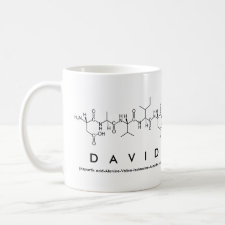
Authors: Du XZ, Hlady V, Britt D
Article Title: Langmuir monolayer approaches to protein recognition through molecular imprinting.
Publication date: 2005
Journal: Biosensors and Bioelectronics
Volume: 20
Issue: (10)
Page numbers: 2053-2060.
DOI: 10.1016/j.bios.2004.08.044
Alternative URL: http://www.pubmedcentral.nih.gov/articlerender.fcgi?artid=2637107
Abstract: Surface plasmon resonance (SPR) spectroscopy and atomic force microscopy (AFM) have been employed to investigate ferritin adsorption to binary surfactant monolayers of cationic dioctadecyldimethylammonium bromide (DOMA) and non-ionic methyl stearate (SME). Surfactant molar ratios, miscibility, and lateral mobility were controlled to define the number, size, and distribution of "binding sites" for ferritin, which under the low ionic strength conditions investigated, adsorbed to the monolayers predominantly through electrostatic interactions. Successive adsorption/desorption cycles revealed that fluid monolayers, capable of laterally restructuring during the initial protein adsorption event, bound up to 60% more ferritin (dependent on SME:DOMA ratios) as compared to monolayers that were immobilized on a hydrophobic support during this first adsorption step. The enhanced binding of ferritin to fluid monolayers was accentuated in films having non-ionic SME as the principal component. These findings support the premise that the surfactants reorganize to form favorable interactions with an adsorbing protein, leading to protein specific charge patterns, or templates, in the films. Template assessment, however, was complicated by the presence of an irreversibly bound protein fraction, which AFM revealed to be locally ordered protein clusters
Template and target information: protein, ferritin
Author keywords: molecular template, Mixed monolayer, miscibility, Ferritin, SPR, AFM



Join the Society for Molecular Imprinting

New items RSS feed
Sign-up for e-mail updates:
Choose between receiving an occasional newsletter or more frequent e-mail alerts.
Click here to go to the sign-up page.
Is your name elemental or peptidic? Enter your name and find out by clicking either of the buttons below!
Other products you may like:
 MIPdatabase
MIPdatabase









